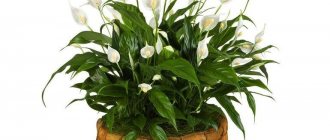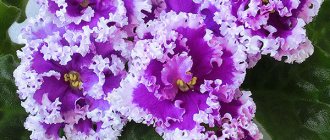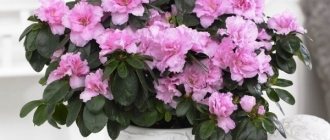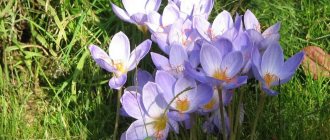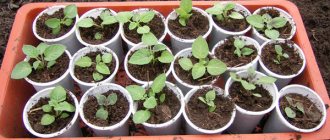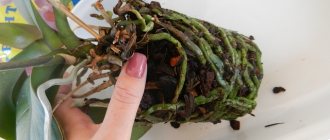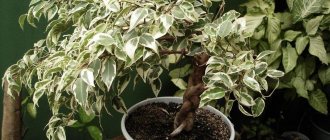07/12/2017 Maria Ivanova 34 comments
Flowers are very fragile and delicate creatures, regardless of their nature and character. They have many similarities with female nature, which is probably why a special variety of beautiful creation was bred - the flower of female happiness.
How often to water the “Women’s Happiness” flower?
Experienced florists know that this tropical plant is quite moisture-loving, but it should not be thoughtlessly filled with water. There are a number of simple rules.
- In addition to regular watering, spathiphyllum needs frequent spraying or wet wiping of the leaves. In addition, you can install a pot with a plant near a home fountain or a humidifier
- When watering you need to focus on the time of year
- It is important to monitor the condition of the flower. Usually he himself signals thirst by lowering the corners of the leaves.
Types of home spathiphyllum with photos and names
In indoor cultivation, the most popular are several types of spathiphyllum out of 50 known in nature:
Spathiphyllum Abundantly blooming (S. floribundum)
A plant with a dense rosette, sometimes consisting of 40 leaves, glossy and dark emerald, 20-25 cm long. It can bloom all year round, the inflorescence is white and yellow.
Spathiphyllum cannifolium (S. cannifolium)
The foliage of this species resembles canna leaf blades and reaches half a meter in height. The cob is light-yellow in color and covered with a delicate white-greenish blanket. With good care, it blooms twice a year: in April-June and at the end of November.
Spathiphyllum Adorable (S. blandum)
It is distinguished by a pale green spathe covering an ear of the same shade, surrounded by large foliage up to 20-35 cm long on petioles reaching 30-40 cm.
Spathiphyllum spoon-shaped (S. cochlearispathum)
A tall species, capable of stretching up to a meter mark. The leaves are large, about 35-40 cm, on petioles 70 cm high. A characteristic feature of the inflorescence is yellowish at the beginning of flowering, and by the end it almost turns black. The blanket is white and has a concave shape similar to a sail.
Spathiphyllum Wallis (S. wallisii)
Perennial from 30 to 60 cm in height with shiny foliage up to 25 cm long. The edges of the leaf blades are wavy. Flowering begins in late spring or early summer, and again in autumn or winter. The cob is light yellow, wrapped in a snow-white blanket, three times larger than the cob.
The best varieties:
Chopin is a compact variety no more than 30-35 cm in height with fragrant flowers with an elongated veil with a pointed tip;
Sensation - considered the largest variety for indoor cultivation, reaching 150 cm in height, with foliage almost 80 cm long;
Picasso - a variegated variety with a white-green pattern on the leaves;
Cupido is a Dutch hybrid with an unusual bedspread shape - elongated and tapered towards the top, colored in various shades of green.
Spathiphyllum is very popular in indoor floriculture due to its unpretentiousness and easy care, accessible even to beginners who are learning the basics of handling plants.
Watering methods
To be sure that watering is necessary, you need to feel the soil.
- Or use another interesting method: when replanting a flower, you can place a long wooden skewer in the soil, which will serve as an indicator of the dryness of the earth ball
- You need to water the spathiphyllum carefully, pouring water in a thin stream around the flower so that the soil layer is not disturbed or cracked. To avoid creating holes that can eventually expose the root system, never pour water into the same place.
- If you have to leave and leave the flower unattended, it is best to place it in a deep pan of water, after watering it.
Top dressing
How to feed and fertilize spathiphyllum? Any mineral fertilizer intended for flowering plants will do. Application frequency varies from season to season. From mid-spring to early autumn, you need to feed twice a month. Until December – monthly. During the rest period, you can not apply fertilizer at all.
Please note: young plants need feeding every seven days during the growing season.
You can also fertilize with natural organic matter, for example, banana skins or diluted chicken droppings. However, their introduction may be difficult due to the spreading leaf rosette. Therefore, experienced gardeners advise adding commercial fertilizer to the irrigation water in the pan. The plant itself will “absorb” the nutrients.
What is orientation to the seasons?
Winter
In winter, watering is significantly reduced. It will be enough to water the flower once a week. If there are heating devices in the room and the air is dry, then it is enough to spray the leaves of the flower as needed.
Summer
In summer, spathiphyllum can be watered once every three days. You can spray and wipe the leaves with a damp sponge up to five times a day.
Spring and autumn
During these two seasons, you must ensure that the soil dries out and water the flower as needed, i.e. when the soil in the pot is completely dry.
Conditions for long flowering
All varieties of spathiphyllum bloom. If flowering does not occur during the year, then you should think about the conditions of maintenance and care.
First of all, a diseased plant will not bloom. A flower with dry leaf tips definitely requires more frequent watering and spraying. Or perhaps he is standing in a draft. Also check the temperature in the room, move the bush away from radiators so that it is not too hot and dry. If the tips of the leaves are curled, then most likely the plant is freezing. Soft yellowed leaves indicate excess moisture, dry yellow leaves indicate insufficient watering or hard water.
If the flower is visually healthy and has green, elastic leaves, then you should pay attention to proper care. Correcting possible errors contributes to long and abundant flowering:
- water for irrigation should be soft and free of impurities. Use tap water that has stood for at least 24 hours in the summer, and melt water at room temperature in the winter;
- choose a suitable pot. In a container that is too large, the flower devotes all its energy to the formation of roots rather than inflorescences;
- place the spathiphyllum in a cooler place, reduce watering, and then return it to its usual conditions. After temporary dormancy, the plant often produces flower stalks;
- Feed the bush once every two weeks, alternating organic and mineral fertilizers or using combined fertilizers for spathiphyllums.
After the inflorescences appear, the plant should be watered and sprayed more abundantly. On normal days, it is advisable to spray once a day, on hot days - twice.
Replanting the plant during flowering is strictly prohibited. It can not only lose flowers, but also die. During this period, spathiphyllum spends a lot of energy on the formation of buds, and replanting greatly weakens it.
Fading inflorescences must be removed. How and why to prune faded flowers of spathiphyllum will be discussed in detail below.
Diseases that occur due to improper watering
When watering a plant, you should always carefully inspect the leaves. They are the indicators of the health of the flower. The appearance of diseases is promoted not only by improper watering, but also by parasites. Most often this is:
- Shield aphids (or scale insects) - usually located on the back of leaves and on stems. It feeds on the sap of the plant, which first leads to dark spots, then completely drying out and dying of the leaf.
- Mealybug - most often appears if the flower is flooded with water. A humid environment is ideal for this pest. You need to look for it between the leaves and on the stems
- Spider mite - this pest can be considered the most unpleasant and dangerous. It sucks the juice from the plant, entangling the leaves with a small whitish cobweb.
- Sooty fungus - spreads on the surface of the leaf in the form of dark spots. Under these spots the plant can neither breathe nor grow.
Diseases and pests
- The roots rot due to excess moisture in the earthen clod.
- Brown tips on spathiphyllum leaves signal the presence of this problem when it first appears, although it may indicate a dry environment and the need for spraying.
- Pale leaves indicate excess light.
- Drooping foliage always tells the gardener that watering is untimely. True, the plant also often reacts to excess moisture by drooping leaves.
- Leaf blades rot only in conditions of low temperatures and high humidity.
- grow poorly due to a lack of manganese and iron in the soil mixture or when they are insufficiently absorbed due to cold conditions or reduced air permeability of the soil mixture.
- Leaves curl when the room temperature drops.
- The edges of spathiphyllum leaves turn yellow when the flower is moistened with too hard water.
- Does not bloom if the plant does not have enough lighting or sufficient air humidity. Often the reason for failure to bloom is irregular feeding or a long absence of replanting. It is often possible to initiate flowering by simply moving the flower pot to more favorable placement conditions.
- Droplets on the leaves are called the phenomenon of guttation, when the plant gets rid of excess moisture. It is typical for many aroids and does not pose a problem in care.
Among the pests on spathiphyllum, many insects have been noticed - aphids, scale insects, thrips, mealybugs and whiteflies, but spider mites are especially annoying to the perennial.
What are the dangers of improper watering?
Spathiphyllum will not bloom if it requires replanting or dividing a large bush into smaller ones. Try increasing the humidity level by misting the flower with a spray bottle.
- Spathiphyllum will not grow if it is flooded with water and placed in direct sunlight.
- Spathiphyllum turns yellow, starting from the edge of the leaf, if watered too often.
- Spathiphyllum flowers can turn black if you overfeed it with fertilizers or overdo it with watering.
Does spathiphyllum need pruning?
It was previously discussed whether spathiphyllum leaves need to be trimmed. The bush has an extensive root system, and each leaf lives almost separately. Therefore, pruning of spathiphyllum leaves is not required. The exception is old, withered leaves, as well as yellowed tips of the leaves of a diseased plant. Another question is whether pruning the spathiphyllum peduncle is necessary.
After flowering, “female happiness” loses a lot of strength, the already unnecessary peduncle takes away the remaining ones. Therefore it needs to be cut off. In addition, a faded flower looks unaesthetic and spoils the appearance of an ornamental plant. In addition, pruning stimulates the growth of new shoots.
How to prune spathiphyllum correctly? It is better to do this with sharp scissors or a stationery knife. The entire arrow should be cut off, as close to the base as possible.
If the peduncle has completely dried out on its own, it should be carefully unscrewed from the rosette of leaves.
Important! Spathiphyllum is considered a poisonous plant; if it comes into contact with the skin and mucous membranes, its juice can cause irritation or an allergic reaction. If you prune the plant, it is better to use gloves.
Possible mistakes in flower care
The most basic, and perhaps the most common mistake is too much moisture. As a result, the root system begins to rot, and the leaves either turn yellow or become covered with brown spots. The flowers become black and brittle.
- Location of the flower indoors . Despite the fact that spathiphyllum is a tropical plant, it should not be placed in direct sunlight. They will “burn” the flower. At the same time, it is also not recommended to keep the flower in a dark place. This will cause the leaves to lighten and stretch. Spathiphyllum will feel best in a shaded place. Usually, the ideal place is an eastern or southern window sill. Under no circumstances should spathiphyllum be placed in a draft; the flower does not like it very much.
- An incorrect feeding schedule will seriously affect the growth and health of the plant. It is important to remember that in winter and autumn it is enough to feed it once a month. In summer and spring, the frequency increases to 3 times a month.
- Well, another common mistake is incorrect transplantation. Spathiphyllum needs to be replanted annually, choosing a time when it does not bloom. It needs to be planted in a relatively tight pot, the diameter of which is 2-3 cm larger than the previous one.
When are leaves removed?
The procedure is carried out in the following cases.
If the leaves turn yellow
- If the tips are visually dry and brown, but the leaf is elastic and green, then the air is dry or the substrate is overdried. Using sharp scissors, cut off the dried areas, capturing up to 0.5 cm of healthy tissue.
- If the entire leaf has turned yellow, remove it too (it will dry out anyway). As experienced flower growers say: “Everything that has turned yellow will not turn green again.” It is important to stop the yellowing process itself - protect from the sun, optimize watering, etc.
If the lower tier turns yellow and dries out
- If the lower leaves turn yellow and then dry out, do not worry. These are natural processes of aging and withering. Trim off dried leaves immediately.
- If, after regular pruning, a lot of dried residue has accumulated at the base of the rosette, it must be removed immediately. They interfere with the formation of new sockets.
- Dried shoots are removed mechanically (it is better to spray the area with a spray bottle first) - one by one, remove in layers of 1 fragment in a downward direction. At the same time, the green stalk is held so as not to damage healthy tissue. The procedure is carried out carefully and carefully; dry parts should not be pulled out abruptly.
Answers to frequently asked questions
What to do if the leaves of a flower dry out, despite the optimal watering schedule and frequent spraying?
You need to monitor the humidity throughout the room. Spraying is a necessary thing, but in the presence of heating devices and dry air, it is not always effective. You can place an indoor fountain or an air humidifier in the room with the flower.
Why doesn't spathiphyllum grow?
First of all, it should not be overly flooded with moisture and placed in a brightly lit place. If these conditions are met, it means that the flower was placed in a pot that was too wide when transplanted.
The plant devoted all its strength to strengthening and growing the root system, and therefore it no longer had enough strength to grow. Replant the plant in a narrow pot where the roots will be a little cramped.
Why does a recently acquired healthy flower slowly begin to turn yellow and dry out?
It is important to remember that flowers purchased in a store must be replanted in a pre-purchased soil mixture, or prepared independently. Bring the flower home, carefully remove it from the pot along with the earthen lump and shake off the “store-bought” soil as much as possible. More about caring for women's happiness
Fill the pot with pebbles or expanded clay, new soil and plant the flower. Don't be alarmed if he turns a little yellow - he should adapt to his new environment.
How to prepare soil for spathiphyllum at home?
If you don't have a ready-made substrate, make your own. Mix sand, peat and soil humus in equal proportions. Add some wood bark and coal to them. Sprinkle the mixture with sod and mix.
Important! Do not forget that there should be pebbles or expanded clay at the bottom of the pot. They help get rid of excess moisture and prevent root rot.
What to do if the white spathiphyllum flower turns green?
To eliminate this problem, you can carefully cut off the old flower stalks at the base of the stem with a sharp blade or knife, being careful not to touch adjacent stems. Dust the cut area with crushed charcoal.
If the flowers continue to remain green, then there is a possibility that this type of spathiphyllum was acquired. You don’t need to think that the “veil” of a flower is only snow-white. Color varies from white to beige and light green. More about the flowering of spathiphyllium.
Briefly about spathiphyllum
The name "spathiphyllum" (or spathiphyllum) is derived from two Greek words: "spathe" - bedspread and "phyllon" - leaf. This is a perennial evergreen plant from the Araceae family.
The bush has no stem; its leaves grow directly from the soil. The roots are short, the leaves are long, oval or lanceolate in shape.
The inflorescence is on a peduncle, which is often confused with a stem. It consists of a cob and one petal-veil, which gave the name to the plant. The petal is white and quickly turns green after flowering.
There are about 40 species of spathiphyllum, many of them are grown at home.
If you are fond of flowers, but do not like capricious plants, the “feminine happiness” flower will suit you. What are the features of growing spathiphyllum?
Summary
So, let's summarize:
- Spathiphyllum is a tropical plant with a (most often) white, sail-like flower with a yellow stem in the center.
- It is popularly called “Women’s Happiness”, as it is believed that it promotes marriage, improvement of family relationships and the birth of children.
- Spathiphyllum should not be overfilled with water; it is advisable to adhere to the irrigation system.
- The frequency of watering depends on the time of year.
- The strict system also applies to fertilizing and fertilizing the soil.
- After purchase, it is best to replant the flower in new soil.
- The pot should be tall and narrow so that the roots are a little cramped in it. Then the crown of the plant will be higher and thicker.
- The flower does not like drafts.
- Spathiphyllum should be watered with settled soft water at room temperature.
Possible problems
Common difficulties when cultivating spathiphyllum: change in leaf color (from yellow to black), lack of flowering. These problems can be solved through proper plant care.
Perennial leaves may turn black. If the leaves turn black, a small black edge appears, this means that the air in the room is too dry. The solution is to humidify the air, place the flower pot on a stand with wet expanded clay.
If most of the leaf turns black, this means that the root system is diseased. The solution is to reduce the frequency of watering, remove the plant from the container, cut off the damaged roots, rinse and sprinkle the cut areas with crushed coal or ash. After drying, plant in fresh soil.
If black spots form in the middle of the leaf blade, then most likely it is a fungal infection. You need to immediately remove the attacked parts of the leaves and irrigate the plant with a fungicide.
The cause of blackening may be an excess of fertilizers. This means that the root system cannot cope with a large amount of nutrients. Solution: wash the roots, transplant the spathiphyllum into a pot with fresh soil.

